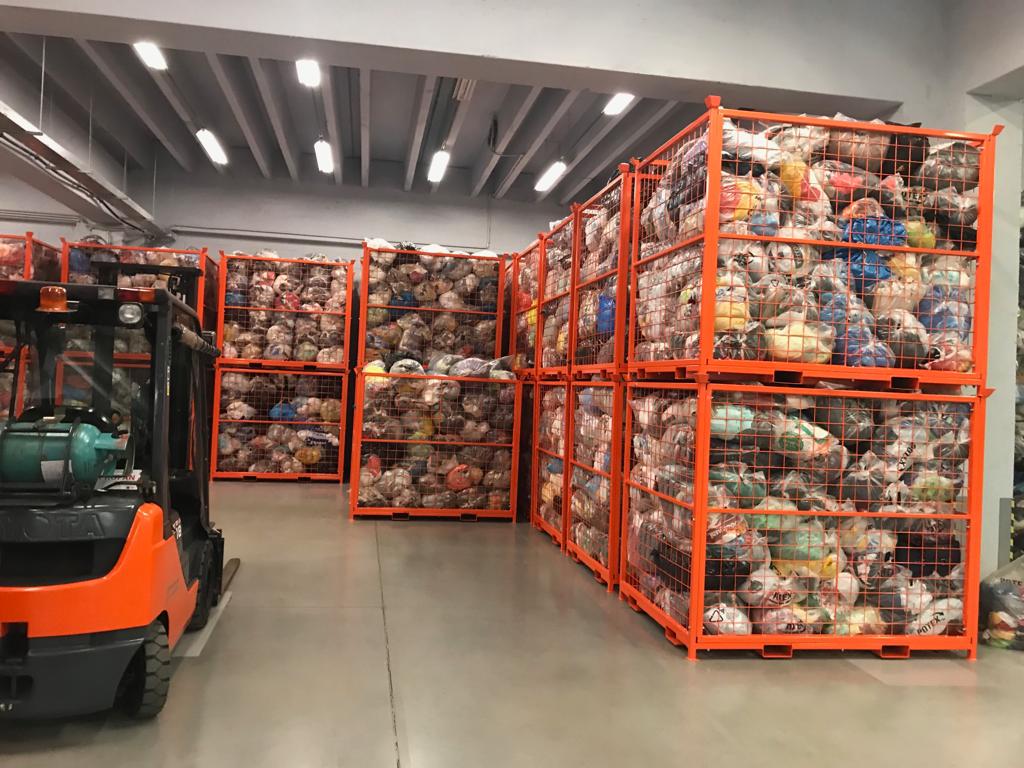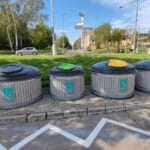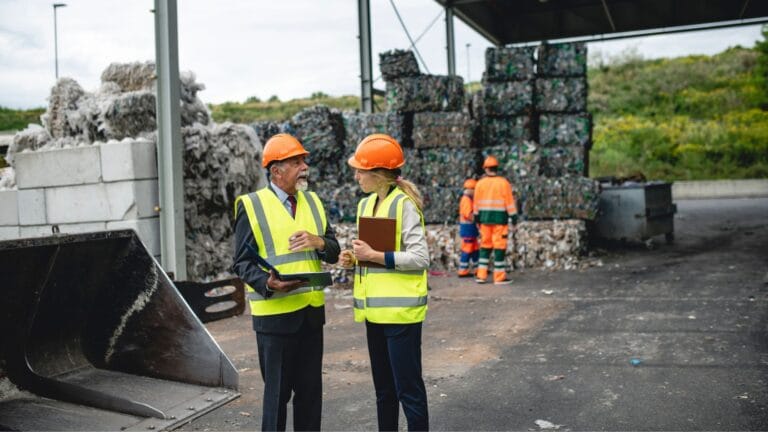How to recycle textiles: The vicious circle of waste collection

Numbers of fashion industry can be pretty shocking – globally, on an average textile waste of around 92 million tons is produced each year and a rubbish truck filled with clothes is discarded at the landfill site every second. According to the EPA Report, 16 million tons of fabric waste are generated by Americans each year. This is equivalent to 6% of the total amount of municipal waste. It is estimated that around 2.5 million tons of garments are recycled while 700,000 tons of secondhand clothing are exported overseas.

24.3 million tons of cotton worldwide per year are produced only for clothes. Consumption during the cultivation of the cotton for a single T-shirt is 2000 liters of water and 150 grams of pesticides, which makes together 360 million kilograms of pesticides per year.
With the growing trends in the fashion industry, people buy more clothing and wear it once or twice. After one time use, the clothing becomes waste and starts occupying space at landfill sites. The diversion of textile waste is crucial since it is becoming a significant component of our landfills. Textile and material trash accounts for 9.5 percent of all municipal solid waste produced in the United States each year.
“Fast fashion plays a big role in the textile waste sector and sadly a very negative one. Quality of the material of textile that people are throwing into the textile waste containers is decreasing from year to year.”
Lenka Harcubova, Chief of Czech textile waste collection company Potex
According to the Czech Ministry of the Environment, over 97% of textile ends up in landfills, which represents about 200.000 tons of textiles a year only in this country.

Not every piece of textile collected from the containers can be donated or processed – however, textiles can later become cleaning cloths, car seat pads, fibers or even banknotes. By returning used textiles, shoes and accessories to circulation, the pressure on the use of primary raw materials is reduced. Recycling of textile also helps to prevent the formation of methane, ammonia and greenhouse gases that are formed during the decomposition of textiles.

Textile collected in containers is not suitable for the European market, estimation says that it is approximately only 1% of it. The rest of it travels to third countries in huge shipping containers producing large amount of greenhouse gas emissions. The other problem of the textile collected through containers is that it is often very contaminated and mainly it is not the pure material demanded for a circular economy like the textile waste that is produced in factories. Nowadays there are no separation machines that could sort out the pure material from the contaminated one and this work is still made by human resources, which is very ineffective and time consuming. Until this separation problem will be solved and people will produce more and more textile waste due to the fast fashion trends, sector of textile waste collection and recycling will be moving around in a trap of this vicious circle.

Textile waste is generated in each stage of the fabric manufacturing route like weaving, spinning, dyeing, garments manufacturing, finishing, and also at the customer end. Textile waste can be classified into two basic categories namely
- Soft waste: Produced from drawing, spinning, and combing.
- Hard waste: Produced from knitting, spinning, weaving, and twisting the fabric.

Each state’s landfills have an unequal space remaining, some states and major cities will ship their garbage outside the area, releasing extra greenhouse gases throughout the process as compared to the same dump staying at its position for a year. For instance, if New York City outsourced all of its landfill requirements to West Virginia, waste transportation would emit 760,000 tons of CO2 per year.
By consuming water, energy, and other resources to create textiles, the textile industry contributes an enormous amount to environmental damage. Cotton uses more pesticides than any other crop, requiring 1/3 pound of insecticides per shirt. Similarly, synthetic materials such as nylon and polyester produce a greenhouse gas, the nitrous oxide that is 300 times more powerful than CO2. When compared to other recyclables, the textile industry has the second biggest potential for reducing greenhouse gas emissions due to all of the resources that go into it.
Thus, we must follow the waste hierarchy which states to reduce, reuse and recycle the waste:
Reduce textile waste
- Learn how to sew old and worn-out pieces of textile to make new garments. You can get a lot of help from YouTube channels in this regard.
- Try to buy stuff made from recycled materials because there is a high probability that you are going to wear that clothing only once or twice.
Reuse textile waste
- You can buy clothing from thrift stores to avoid heavy costs and dumping clothing to landfill sites.
- You can also donate your clothes to help the needy.
- You can throw your clothes into specialized textile waste containers and textile waste collection companies will take care of the donation to charity purposes or reusing of the separated material
Sensoneo and its smart ultrasonic bin sensors are helping textile waste collectors with remote monitoring of the containers in order to collect more material and decrease collection costs.
Recycle textile waste
- You can cut a favorite piece from your old shirt and make a new dress out of it, or make a pillowcase, or maybe make the dress for your pet.
- You can use old towels to make a colorful rug or a mat.

Pictures: Potex, Ekocharita, Canva
Latest waste library articles

How residential garbage pickup works and how to make it better
Waste Collection
The Evolution of EPR Compliance and PRO Software Systems
EPR Compliance, Extended Producer Responsibility (EPR)
The Unique Waste Management Challenges of North American Universities
Universities
5 Biggest organized waste crimes worldwide
Environment
Smart Waste Newsletter
Get monthly updates from our company and the world of waste!






















